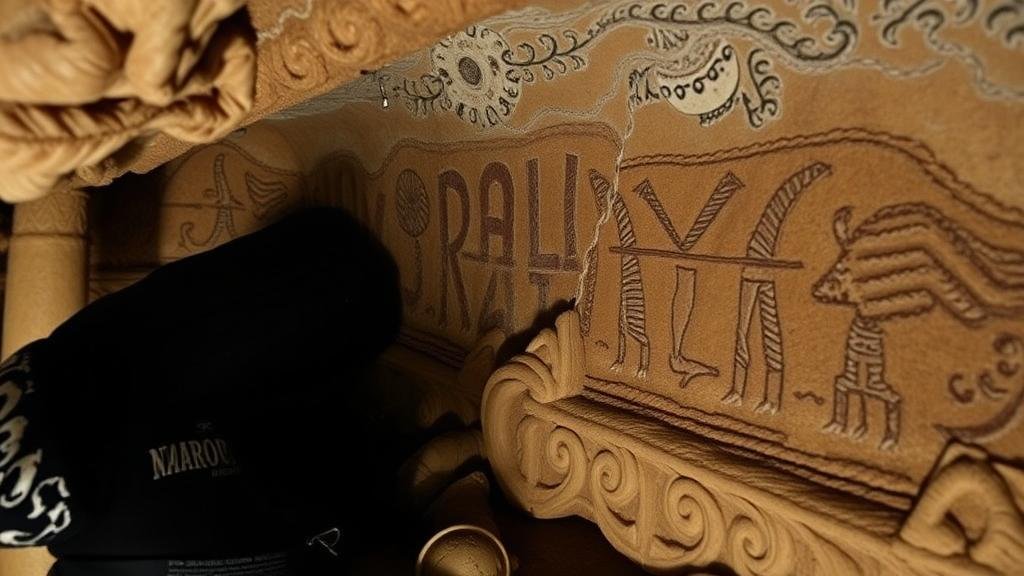Venturing into the unexplored depths of cave systems to uncover lost artwork.
Venturing into the Unexplored Depths of Cave Systems to Uncover Lost Artwork
Cave systems have long captivated the imagination of explorers, archaeologists, and artists alike. Hidden beneath the earths surface lie vast networks of caverns, many of which are yet to be fully explored. These subterranean passages often serve as time capsules, preserving ancient civilizations stories through art. This article delves into the fascinating realm of cave exploration focused on uncovering lost artwork, examining historical significance, technological advancements, and the future of this unique field.
The Historical Significance of Cave Art
One of the most remarkable aspects of cave art is its historical significance. Dating back tens of thousands of years, cave paintings provide insight into the lives and cultures of our prehistoric ancestors. Notable examples include:
- Lascaux Caves, France: Discovered in 1940, these caves contain more than 600 paintings, predominantly of animals. artwork is estimated to be over 17,000 years old, shedding light on the regions Pleistocene ecosystem.
- Altamira Cave, Spain: Famous for its vivid bison paintings, Altamira represents one of the earliest known sites of cave art, with estimates suggesting its creation around 36,000 years ago.
- Cueva de las Manos, Argentina: This site features over 800 handprints and animal imagery, demonstrating rich artistic expression from ancient hunter-gatherer societies roughly 9,000 years ago.
These discoveries highlight the importance of cave art in understanding not just the artistic capabilities of early humans, but also their social structures, belief systems, and environment. As humanity ventures deeper into unexplored cave systems, the potential for uncovering similar artworks is immense.
Technological Innovations in Cave Exploration
Advancements in technology have significantly enhanced our ability to explore and document cave systems without causing damage to fragile artworks. Some of these innovative technologies include:
- 3D Laser Scanning: This technology allows researchers to create highly accurate digital models of cave environments, preserving intricate details of artworks and formations that could be at risk from human interference.
- Ground-Penetrating Radar (GPR): GPR is a non-invasive method used to detect voids or hidden chambers within cave networks, helping explorers plan safer and more efficient routes to valuable sites.
- Drone Technology: Equipped with high-resolution cameras, drones can survey inaccessible areas of cave systems, capturing images and data for further analysis.
Such technologies not only enhance safety for explorers but also enable comprehensive documentation, ensuring that even if artworks are lost to time or natural factors, their existence is preserved in digital format.
Case Studies: Recent Discoveries
Several exciting discoveries have highlighted the ongoing importance of cave exploration. For example, in 2022, researchers discovered a new chamber in Cueva de las Manos in Argentina, revealing previously unseen wall art. This chamber contained striking images of animals, which are believed to be around 8,000 years old, furthering our knowledge of the regions prehistoric inhabitants.
Another notable case occurred in 2023 when a team led by Dr. Ana Ruiz identified a series of intricate carvings deep within a cave in the Apuseni Mountains of Romania. Dating back to the Neolithic period, these carvings depicted daily life and rituals, providing a snapshot of cultural practices from over 5,000 years ago.
Challenges and Ethical Considerations
Venturing deeper into unexplored caves is not without its challenges and ethical implications. Key concerns include:
- Preservation of Artworks: Many cave paintings are susceptible to degradation from human interference or environmental factors. Preservation techniques must be prioritized to ensure artworks endure.
- Access and Permits: Navigating the legal frameworks guiding cave exploration can be complicated. Many cave systems require permits, and ethical considerations must extend to respecting the wishes of local communities.
- Impact of Tourism: Popular cave artworks, such as those in Lascaux, have suffered from exposure to air, light, and human presence. It is crucial to strike a balance between public access and preservation.
Addressing these concerns requires collaboration among researchers, conservationists, and local authorities to develop sustainable practices for exploration and preservation.
Conclusion: The Future of Cave Exploration and Art Discovery
The exploration of cave systems promising lost artwork continues to be a thrilling field that combines history, archaeology, art, and technology. As we push deeper into these mysterious underground realms, the potential for uncovering significant cultural artifacts remains high.
By harnessing technological advancements, prioritizing preservation, and fostering ethical exploration practices, the future looks bright for those looking to uncover the artistry of our ancient ancestors. It is crucial for enthusiasts, researchers, and policymakers to work together to ensure that the stories held within the depths of our planet are protected and celebrated for generations to come.
Actionable Takeaway: For aspiring cave explorers or those interested in this field, consider pursuing training in conservation techniques and emerging technologies while remaining informed about ethical exploration practices. Join local archaeological societies to network and get involved in ongoing research projects.



